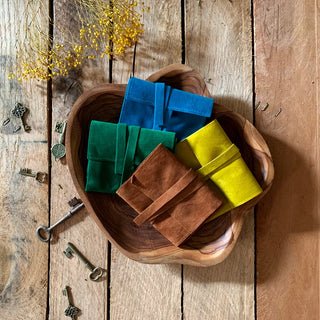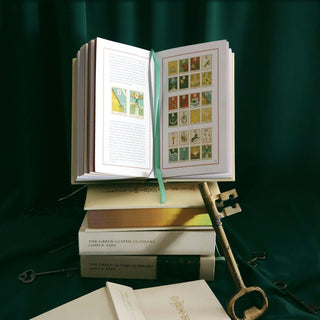GUIDE TO Lenormand
INTRO TO LENORMAND

LENORMAND
AN INTRODUCTION
Lenormand is, at its heart, an oracle deck. Its origins can be traced back to 1800, but its popularity has only recently peaked. Lenormand is comprised of a set of thirty-six pictorial symbols that can be used to tell a story and offer insight on the future. The Grand Tableau, which incorporates all thirty-six cards in the deck, is where the genius of Lenormand lies. Reading the Grand Tableau can take several hours, as you will have to spend time stringing the symbols together and weav.ing a story. It can tell you so much from so many differ.ent angles that you can easily get lost in the intricacies. It may sound intimidating now, but once you become familiar with the meanings of the symbols, you will find it incredibly intuitive. Lenormand works best when asking about specific events in the future, but can also be used to give you a general overview of what’s to come.
If you haven’t looked through the cards yet, pick up your deck and look at each one closely. You’ll notice a few things on each card: a name, a number, a glyph, an image, and an inset playing card. In the following page are a few questions that may have just popped into your head.

WHERE DID LENORMAND COME FROM
Lenormand’s true origin is still not entirely known. It was partially inspired by the Game of Hope, a German card game, but also was found to have links to the symbolism found in coffee ground readings. The name “Lenormand” is actually somewhat of a misnomer. Although the cards were named after Marie Anne Lenormand, a prominent diviner that read for royalty in the late eighteenth century, she apparently never used this specific set of symbols.

WHERE DID THE SYMBOLS COME FROM?
These thirty-six symbols were likely taken from daily life in the eighteenth century. Their universal nature means that they’ve stayed flexible and even now reliably describe the spectrum of human experience. Compared to other forms of cartomancy, Lenormand is concise. At first, some cards may seem random and outdated, and they are. Social norms have come a long way since 1799. So, if you would like to edit your deck to better fit you or your querent’s life (the one asking the question), you can substitute these cards for their like-numbered cards. Just make sure you have a total of thirty-six cards when you are doing a reading.
Green Glyphs Lenormand comes with these extra cards:
- 28. The Lady II
- 29. The Gentleman II
- 28. The Person
- 29. The Person II
- 36. Instead of the Cross, the Albatross

What are the small images of playing cards on each card?
In short, these inset playing cards reveal an underlying system that allows you to read the cards in an even deeper manner. The inset cards also create links between certain cards. You’ll notice that there are no twos, threes, fours, or fives in the entire deck. The cards begin at six and go up to Aces. It’s based on the sixteenth century Piquet Playing Card deck (with sixes added), which is still in use today.
You can also use the inset playing cards to “count the pips” and answer yes or no questions. Reading the inset cards isn’t necessary or required to read Lenormand, but it does offer a little more insight.

HOW IS IT DIFFERENT THAN TAROT
The best way to sum up the difference is that Tarot is used to offer insight on the subconscious of the inquirer, while Lenormand is more useful in telling past and future events and laying out a story. Tarot tells us what we didn’t think we wanted to know, and Lenormand tells us what may come to be and what has happened to get us here. In Tarot, cards are read based on their positions in a spread. For example, in a Celtic Cross, the card in the second position will stand for your challenge, but Lenormand cards are read based on their proximity to each other. While each card in Lenormand has associated symbolism, no card can really be read on its own.
Lenormand is all about combinations. You can read cards in pairs or triplets or in groups. It can be an exquisite tool for storytelling and will keep your creative wit fresh.
One major advantage of Lenormand is that the symbolism and meanings of each card will be the same throughout every deck. Regardless of “Book” being represented by a bible or a novel or a magazine, the meaning is the same throughout all decks: secrets, knowledge, or literally a book. Therefore, it’s crucial for Lenormand cards to be kept simple and clear.











